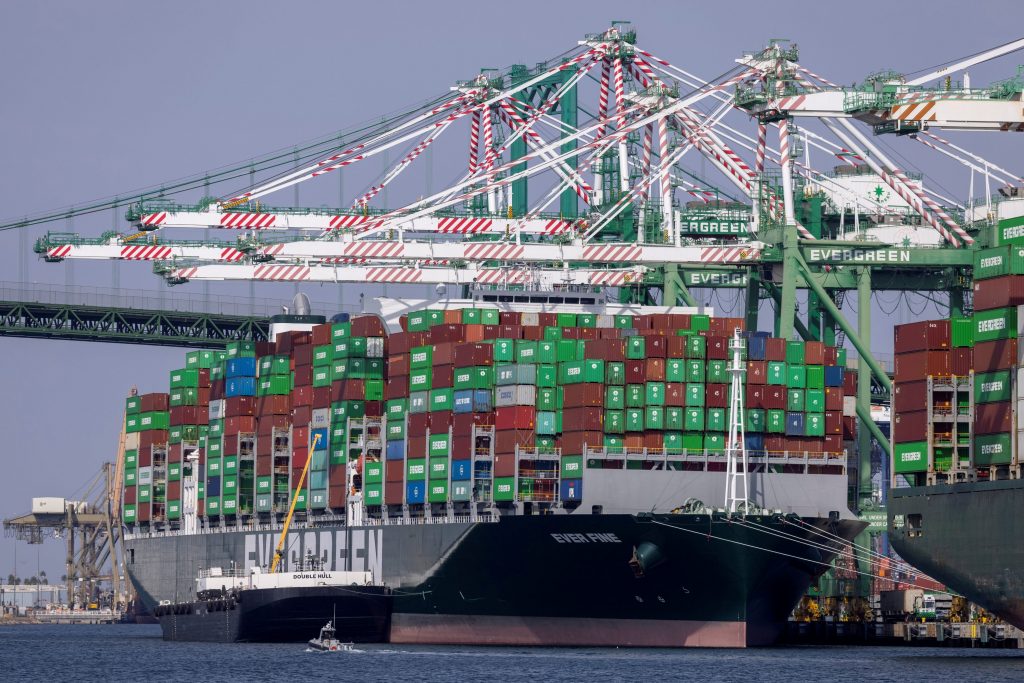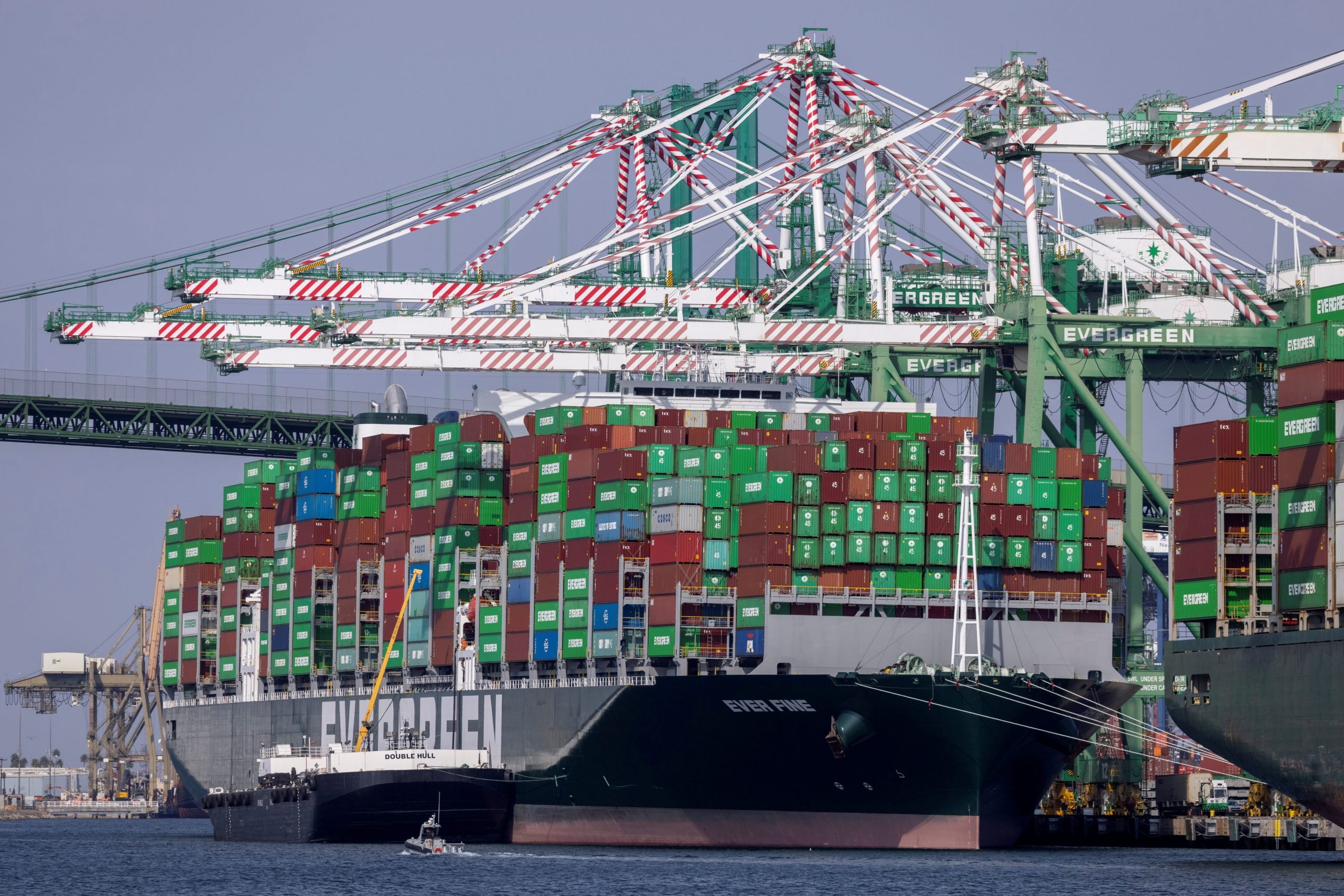
Reuters/Mike Blake/File photo
- The ports of Los Angeles and Long Beach are experiencing record backlog as cargo ships wait to dock.
- The ports handle nearly half of inbound containers for the US, making the backlog a huge issue.
- A California longshoreman told Insider what it's been like to work the ports. They chose to remain anonymous due to their job, but their identity has been verified by Insider.
- This is their story, as told to freelance writer Jenny Powers.
A California longshoreman told Insider what it's been like to work the California ports during record backlog. They chose to remain anonymous due to their job, but their identity has been verified by Insider. This is their story, as told to freelance writer Jenny Powers.
I've been working as a longshoreman at California's San Pedro Bay Port Complex for close to 15 years, and the only thing I know for sure about the congestion here is that everyone is blaming someone else.
The shipping companies blame us for not covering skilled-labor jobs, but they're the ones that approve training for those types of jobs. Then we turn around and blame COVID-19 for the influx of online orders. Consumers see the ships backed up and say we're not unloading fast enough. Truckers complain about the lack of chassis at the port, which limits the number of containers that can be carried out of the yard. It's a total blame game.
But the blame game has to start somewhere, and this time, it started with backlogs at the port.
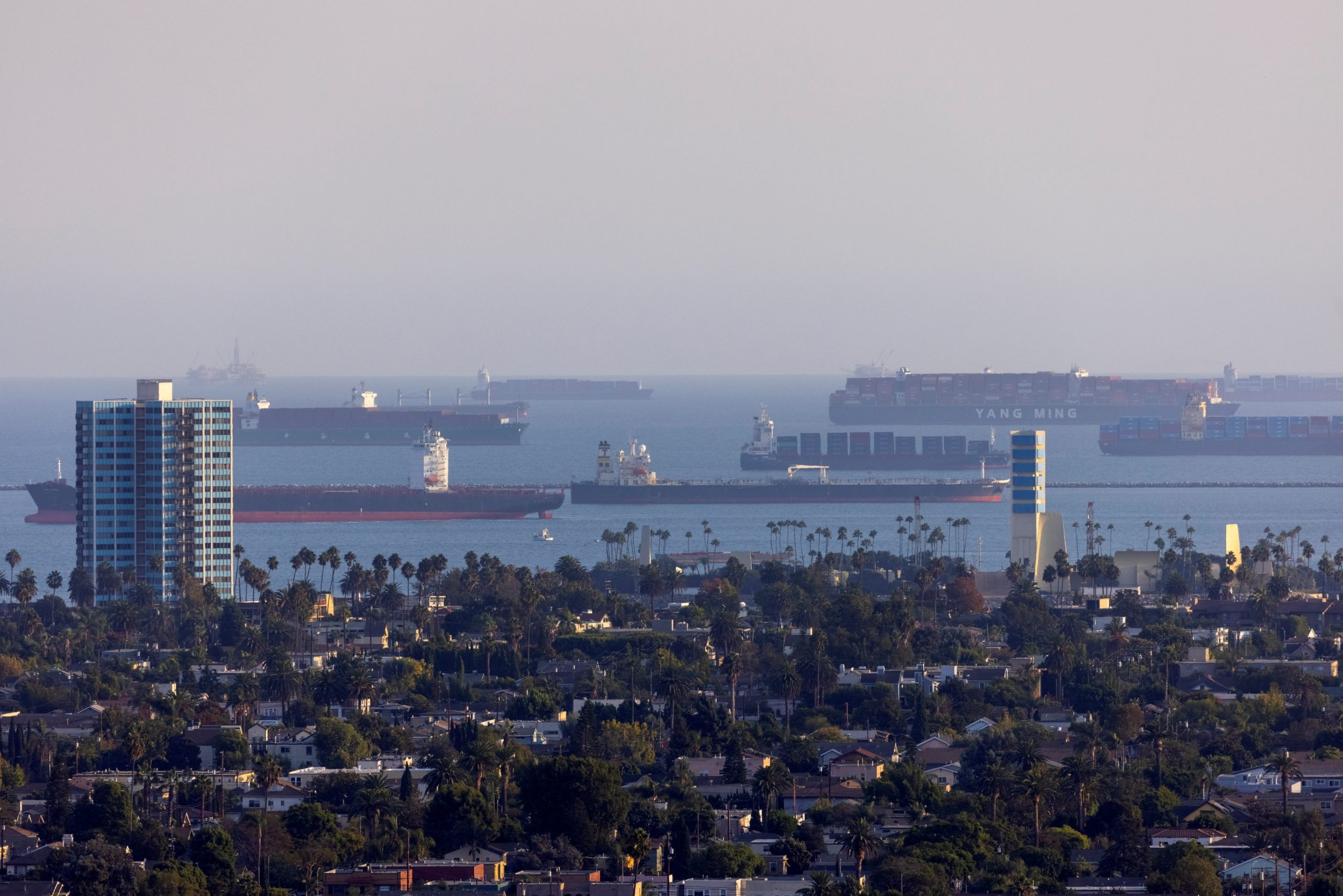
Mike Blake/REUTERS
The ports of Los Angeles and Long Beach saw record backlog last month, with 65 cargo ships stuck off of the coast waiting to dock and unload. Combined, the ports are the largest complex in the Western Hemisphere and handle an estimated 40% of inbound containers for the US, making them some of busiest in the world. The recent backlog is just another example of a global supply chain in crisis.
Right now, every single part of the supply chain is backed up - from the overseas shippers to the U.S. receivers - and there are no signs of it dying down anytime soon.
We're like the Costco of ports
As a major gateway for trans-Pacific trade, everything you can imagine comes through here.
Longshoreman - or dock workers, as we are often referred to - work in commercial ports and harbors, unloading and loading cargo to and from vessels through either manual labor and by operating heavy machinery. It can be a physically demanding job most of the time, and by the end of the shift, it's pretty normal to feel like you did the most intense workout of your life - even with an hour lunch break and two 30-minute breaks.
I'm what is referred to as an Identified Casual, meaning I get the work left over from the Regulars, who are the permanent full-time workers in the Union.
Since the pandemic, congestion at ports like mine is at an all-time high. Ships idling and anchored offshore can be seen for miles as they sit waiting for their turn to dock and have their cargo unloaded.
According to the Marine Exchange of Southern California, as of October 5, there were a total of 143 ships in port: 88 at anchor or drift areas and 55 at berths. The record at the time was 157 total ships, and that was set just last month.
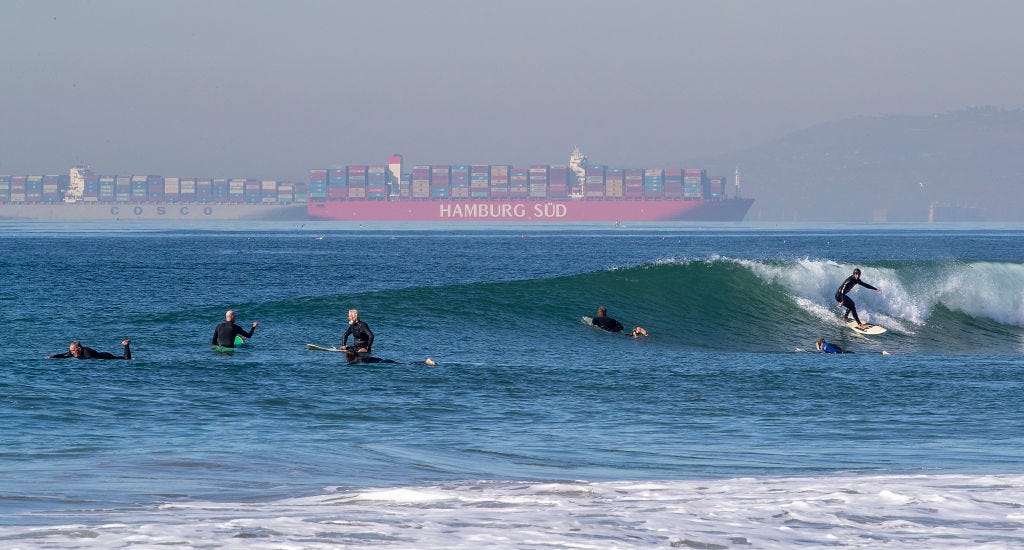
Allen J. Schaben / Los Angeles Times via Getty Images
Despite what it may look like, those crews aren't exactly stranded out there in the water. There's a ferry service that transports people back and forth from the docks, so they're free to come on land and pick up food or supplies.
They can even go to Disneyland if they want. They might as well. There's not much else for them to do. It's a waiting game.
The craziest part is that despite all the logistical challenges and logjam, it's not going to stop - and that's because there's still plenty of money to be made.
What we're witnessing is a vicious cycle
Since the pandemic, more people have shopped online than ever before, increasing the number of shipments coming into our ports.
Retailers are encouraging consumers to shop early to ensure their gifts arrive in time for Christmas, causing a public frenzy and onslaught of online orders.
As long as manufacturers continue to pay warehouses to ship their products, it's business as usual for them. The warehouses will then continue contracting with shipping companies to ship their containers out, and the ports won't turn ships away because they make all their money in docking fees and unloading containers.
All of this has affected the delicate balance of the supply chain: Warehouses are bursting at the seams, shipping containers are in excess demand, chassis are running out, equipment is being run ragged, waterways and railways are overwhelmed, trucks and truckers are maxed out, and our yard and ports are overflowing as a result.
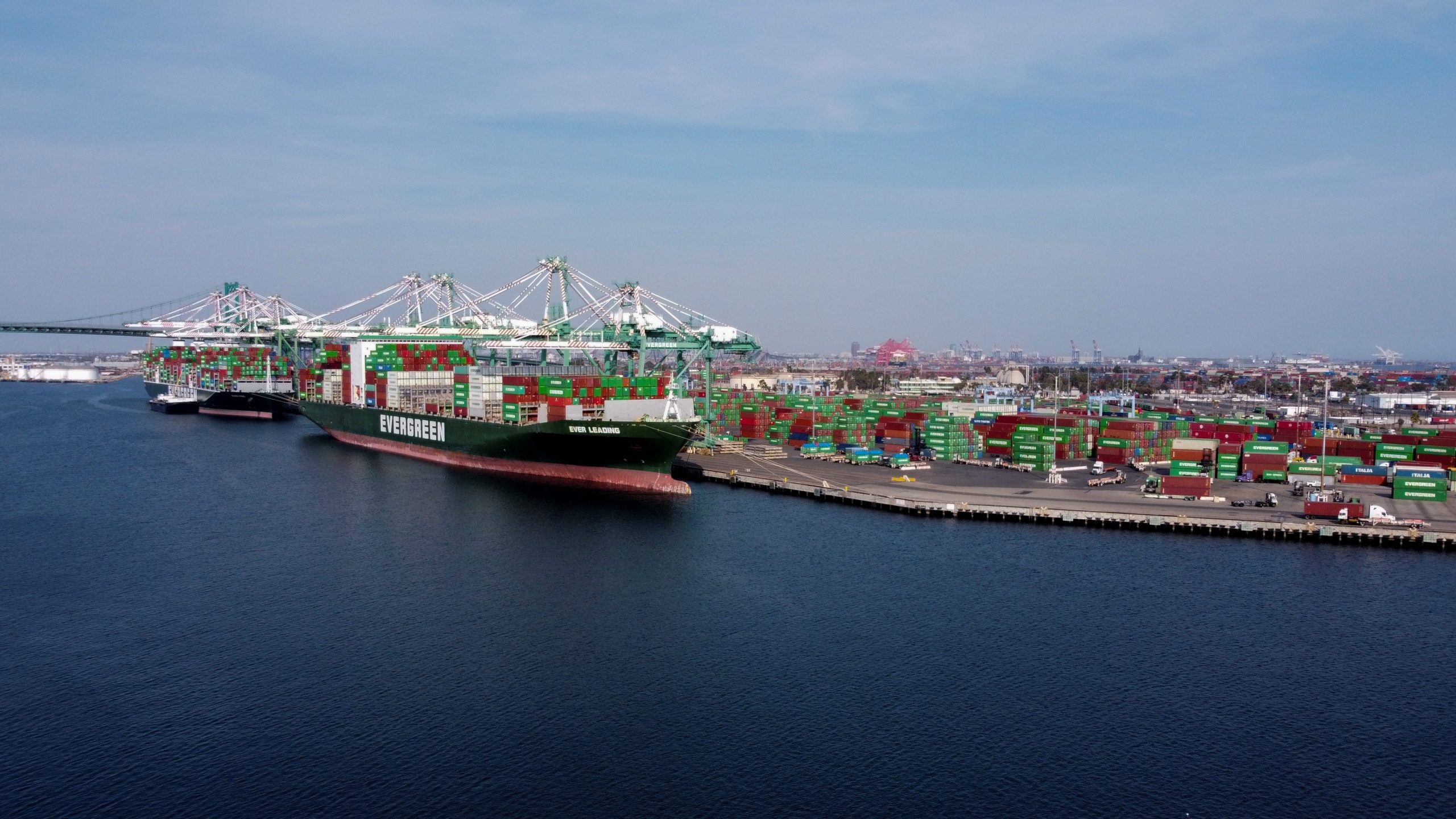
Reuters/Mike Blake
There's also been a lot of talk about the port being closed on weekends, but it's only closed to truckers on Saturdays and Sundays in an effort to manage traffic. The ports are open on weekends and we are here sorting, unloading, and loading cargo, but there's not a lot of room in the yard because of the staggering amount of shipments we're dealing with.
Those of us with our boots on the ground have zero say in what goes on around here. We just keep cranking away; we haven't stopped.
Being a Casual means no two days are alike
As Casuals, we never know what our actual job is until we arrive for a shift and get assigned our tasks.
The work ranges from boring and repetitive, like driving a utility tractor rig around all day - known amongst the dock workers as the Shake and Bake, because the truck is shaky and has no air conditioning - to activities like lashing containers on the ships, which, while an extremely strenuous activity, makes the shift fly by. I'll take that over monotonous work any day of the week.
The surge in cargo hasn't affected our day-to-day as far as how we work, but there's way more traffic in the yard now, and more containers are being stacked in places I've never seen them stacked before.
The last time I saw a backlog close to what we're experiencing now was in 2015, when the International Longshore and Warehouse Union, which represents dock workers, and the Pacific Maritime Association, which represents all the shipping companies, were embroiled in lengthy contract negotiations, which resulted in work slowdowns and stoppages.
Some people assumed workers were striking, but the Pacific Maritime Association essentially choked us out by cutting our workload down. It was a soft lockout, and everyone was playing dirty.
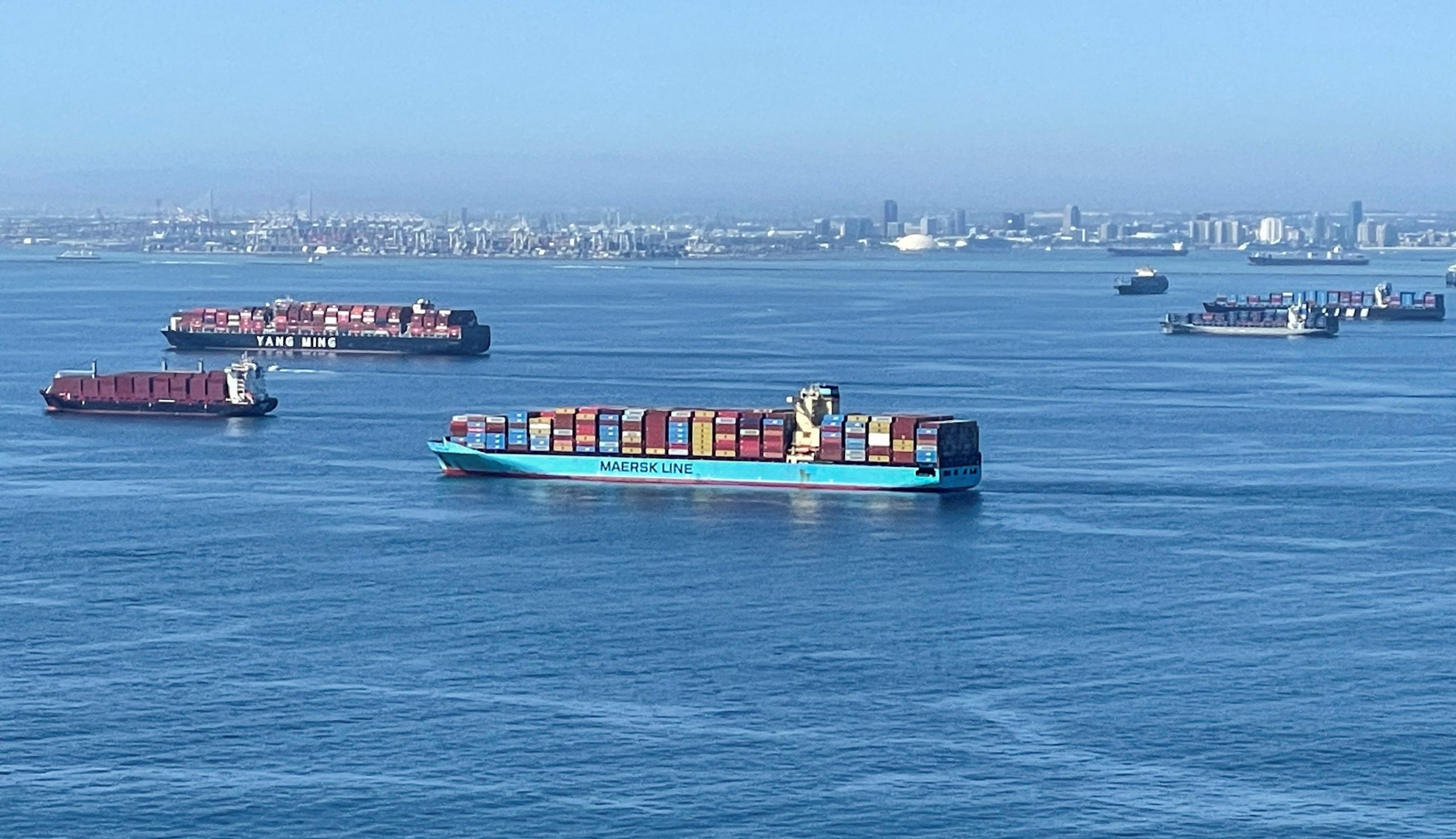
Reuters/Alan Devall
Ships were backed up in the harbor while both entities struggled to work out their differences but it's nothing compared to the number of ships out there now.
The agreement between International Longshore and Warehouse Union and the Pacific Maritime Association was set to expire in 2019, but both parties agreed to extend the expiration to July 1, 2022, so you've got to wonder how much of what's going on here is a coincidence versus a matter of timing.
It would be catastrophic for the situation at the ports to get any worse - but it easily could
Before the backup, I worked four days a week, now I'm working between six and seven days a week.
In the past, there might have been 200 jobs available for Casuals during a shift. Now it's often double or triple that amount. Whoever says people aren't working because they're sitting home on unemployment should come down here to the port to see for themselves.
The way I see it, we are all in this together. Every link in the supply chain needs to keep up their end of the bargain.
Instead of pointing fingers, we all need to lend a hand and get it done.
